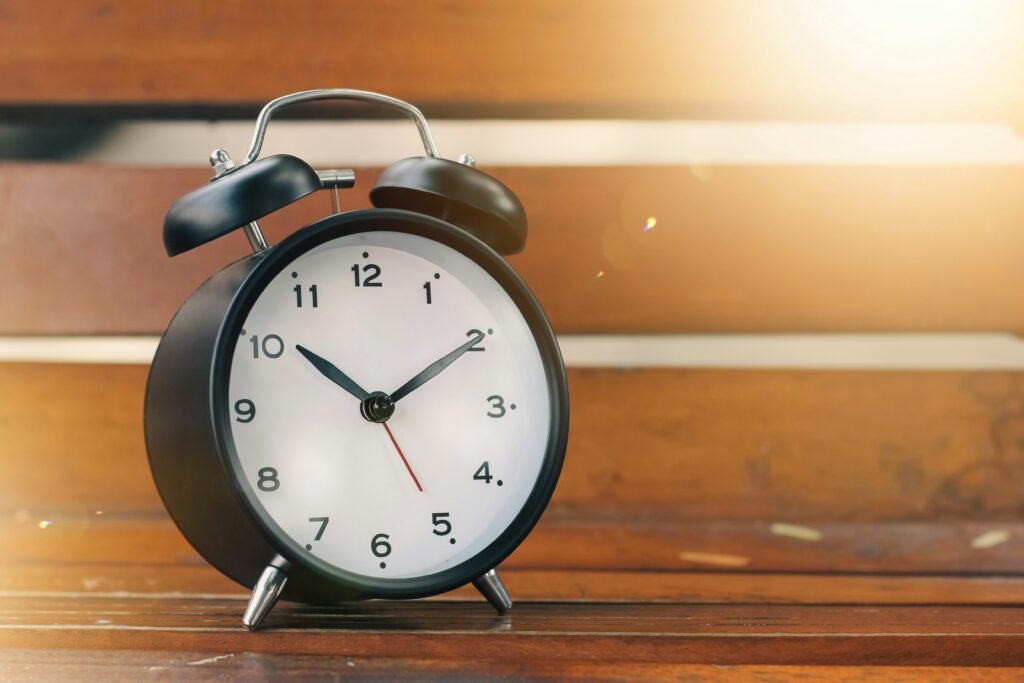So, you’ve found yourself in a predicament with your clock, huh? Well, fear not, because we’ve got you covered with our step-by-step troubleshooting guide for clock issues. Whether you’re dealing with a clock that’s running too fast, too slow, or not running at all, we’ll walk you through the process of identifying and resolving these common problems. By the end of this article, you’ll be well-equipped to tackle any clock issue that comes your way and have your timepiece ticking away flawlessly once again. So, without further ado, let’s get started, shall we?

This image is property of images.unsplash.com.
A Step-by-Step Troubleshooting Guide for Clock Issues
Having a clock that is not working properly can be frustrating, especially when you rely on it to keep you on schedule. Whether your clock is not working at all, losing time, gaining time, has stuck or loose hands, malfunctioning chimes, making loud ticking noises, experiencing problems with the pendulum, or displaying the incorrect date, this comprehensive troubleshooting guide will help you identify and resolve common clock issues.
Clock is not working
Check power source
The first step in troubleshooting a clock that is not working is to check its power source. Ensure that the clock is securely plugged into a working power outlet or that the batteries are inserted correctly.
Replace batteries
If your clock is battery-operated and it is not working despite having fresh batteries, try replacing them. Sometimes, batteries can lose their charge or become corroded, which can prevent the clock from functioning properly.
Test power outlet
In case your clock is powered by electricity, it is essential to check if the power outlet is working. Plug another device into the same power outlet to confirm if it is providing electricity.
Reset clock
If the clock is still not working after checking the power source and replacing batteries, try resetting the clock. Look for a reset button on the clock or consult the user manual to find the appropriate method for your specific clock model.

This image is property of images.unsplash.com.
Clock is losing time
Verify correct time zone
Ensure that the clock is set to the correct time zone according to your location. Incorrectly set time zones can cause the clock to lose time.
Check for daylight saving time settings
If your location observes daylight saving time, confirm that the clock’s settings are adjusted to accommodate this time change. Failing to update the clock for daylight saving time can lead to time discrepancies.
Replace worn-out batteries
Worn-out batteries can result in a clock losing time. If the clock uses batteries, replace them with fresh ones to ensure accurate timekeeping.
Clean internal components
Dust and debris can accumulate inside the clock, impairing its movement mechanisms. Carefully clean the internal components using a soft cloth or brush to maintain smooth operation and accuracy.
Reposition clock for better reception
If your clock receives a radio or satellite signal for synchronization, ensure that it is positioned in an area with good reception. Obstructions or electromagnetic interference can disrupt the synchronization process, causing the clock to lose time.
Clock is gaining time
Verify correct time zone
Just like when troubleshooting a clock that is losing time, confirming that the clock is set to the correct time zone is essential when addressing a clock that is gaining time.
Check for daylight saving time settings
Ensure that the clock is programmed to account for daylight saving time changes. Failure to adjust the clock settings accordingly may cause it to gain time.
Replace worn-out batteries
Check the batteries in your clock and replace them if they are worn-out. Weak batteries can impact the clock’s timekeeping mechanism, leading to inaccurate timekeeping.
Adjust clock’s timekeeping mechanism
Clocks with mechanical or quartz movements may have a time adjustment screw or dial. Consult the user manual for instructions on how to adjust the clock’s timekeeping mechanism to slow down or speed up time.

This image is property of images.unsplash.com.
Clock hands are stuck or loose
Check for obstructions
Inspect the clock’s hands to ensure that they are not obstructed by any foreign objects. If there are obstructions, carefully remove them using a soft cloth or tweezers.
Inspect clock hands for damage
Examine the clock hands for any visible damage or misalignment. If the clock hands are bent or damaged, gently adjust them back into their proper position, or consider replacing them if necessary.
Tighten loose clock hands
If the clock hands are loose, carefully tighten the securing nut located on the center post of the clock’s movement. Use a small wrench or pliers to tighten the nut without applying excessive force.
Adjust clock hands’ position
If the clock hands are not pointing to the correct time, they may need to be repositioned. Refer to the user manual or follow the instructions provided by the clock manufacturer to adjust the position of the clock hands.
Clock chimes are not working
Check chime settings
Confirm that the chime settings on your clock are turned on. Some clocks have a switch or button that enables or disables the chime function.
Replace chime mechanism or hammers
If the chimes still do not work after checking the settings, it may be necessary to replace the chime mechanism or the hammers. Consult a professional clock repair technician or refer to the user manual for guidance on replacing these components.
Reset chime sequences
In some cases, the chime sequences can become out of sync, causing the chimes to malfunction. Reset the chime sequences according to the manufacturer’s instructions to resolve the issue.
Ensure proper alignment of chime rods
If the chimes produce a muffled or unclear sound, check the alignment of the chime rods. Make sure that they are properly aligned and not touching each other, as this can affect the quality of the sound.
Clock is not chiming at the right time
Check chime synchronization
Ensure that the chime synchronization mechanism is properly set. Some clocks have a synchronization lever, while others may require adjustments to the chime rods. Consult the user manual or a clock repair professional for guidance on synchronizing the chimes.
Verify correct strike selector position
Certain clocks have a strike selector position that determines whether the chimes and strikes occur simultaneously or separately. Make sure the strike selector is set to the correct position to align the chimes with the current time.
Adjust strike hammers
If the clock chimes at incorrect times or produces inconsistent sounds, the strike hammers may require adjustment. Consult the user manual or seek professional assistance to properly adjust the strike hammers.
Clock is making loud ticking noises
Inspect for foreign objects
Carefully examine the clock’s internal mechanism for any foreign objects that may be causing the loud ticking noise. Remove any debris or obstructions to restore smooth operation.
Lubricate clock’s internal gears
Lack of lubrication can cause gears to grind against each other, resulting in loud ticking noises. Apply a small amount of clock-specific lubricant to the gears as recommended by the manufacturer.
Check for loose components
A clock that is making loud ticking noises may have loose components. Inspect all visible components, such as screws and fasteners, and tighten them if necessary.
Replace worn-out parts
If the ticking noise persists after inspecting for foreign objects, lubricating gears, and tightening loose components, there may be worn-out parts inside the clock. Contact a professional clock repair technician to determine the damaged parts and replace them accordingly.
Clock’s pendulum is not swinging
Check pendulum suspension spring
Inspect the pendulum suspension spring, which connects the pendulum to the clock movement. Ensure that the spring is securely attached and not broken. If the spring is damaged or missing, replace it with a suitable replacement part.
Ensure pendulum is properly hung
Verify that the pendulum is correctly hung from the suspension spring. Adjust the pendulum hanger to ensure that it is balanced and can swing freely.
Adjust pendulum length
If the pendulum is swinging too fast or too slow, it may require adjustment. Most pendulums have an adjustable length mechanism to regulate the swing. Follow the manufacturer’s instructions or consult a clock repair professional for guidance on adjusting the pendulum length.
Level the clock
Uneven placement of the clock can cause the pendulum to stop swinging. Ensure that the clock is placed on a level surface to facilitate proper movement of the pendulum.
Clock is not displaying the correct date
Verify correct date setting
Check the date setting on your clock to ensure that it is configured correctly. For clocks with digital displays, consult the user manual for instructions on how to adjust the date setting.
Adjust date mechanism
If the clock’s date mechanism is not functioning correctly, it may need to be adjusted or repaired. Refer to the user manual or contact the manufacturer for assistance in addressing this issue.
Reset calendar wheel
Some clocks use a calendar wheel to display the date. If the calendar wheel is not advancing or displaying the correct date, gently adjust it to the current date manually. Ensure that the gears and components are properly aligned.
Clock face or dial is damaged
Repair or replace clock face
If the clock face is damaged, such as cracked glass or peeling numbers, consider repairing or replacing it. Contact a professional clock repair technician who specializes in clock face restoration to ensure a proper repair.
Restore clock dial
In cases where the clock dial has faded or discolored over time, restoration may be required to enhance its appearance. Seek the assistance of a professional dial restorer who can rejuvenate the clock dial and bring it back to its original condition.
Clean and polish clock’s face
Regularly clean and polish the clock’s face to maintain its appearance and readability. Use a soft cloth or a non-abrasive cleaning solution recommended for clock faces. Be gentle to avoid damaging the face or any delicate markings.
By following this step-by-step troubleshooting guide, you can address various clock issues and restore your timepiece’s functionality. However, if you encounter complex or intricate problems that require professional expertise, do not hesitate to seek the assistance of a qualified clock repair technician. With proper care and maintenance, your clock will continue to serve as a reliable timekeeper for years to come.
